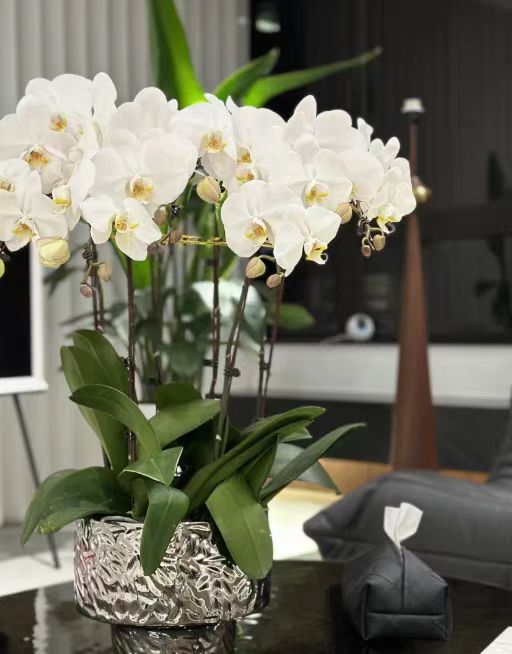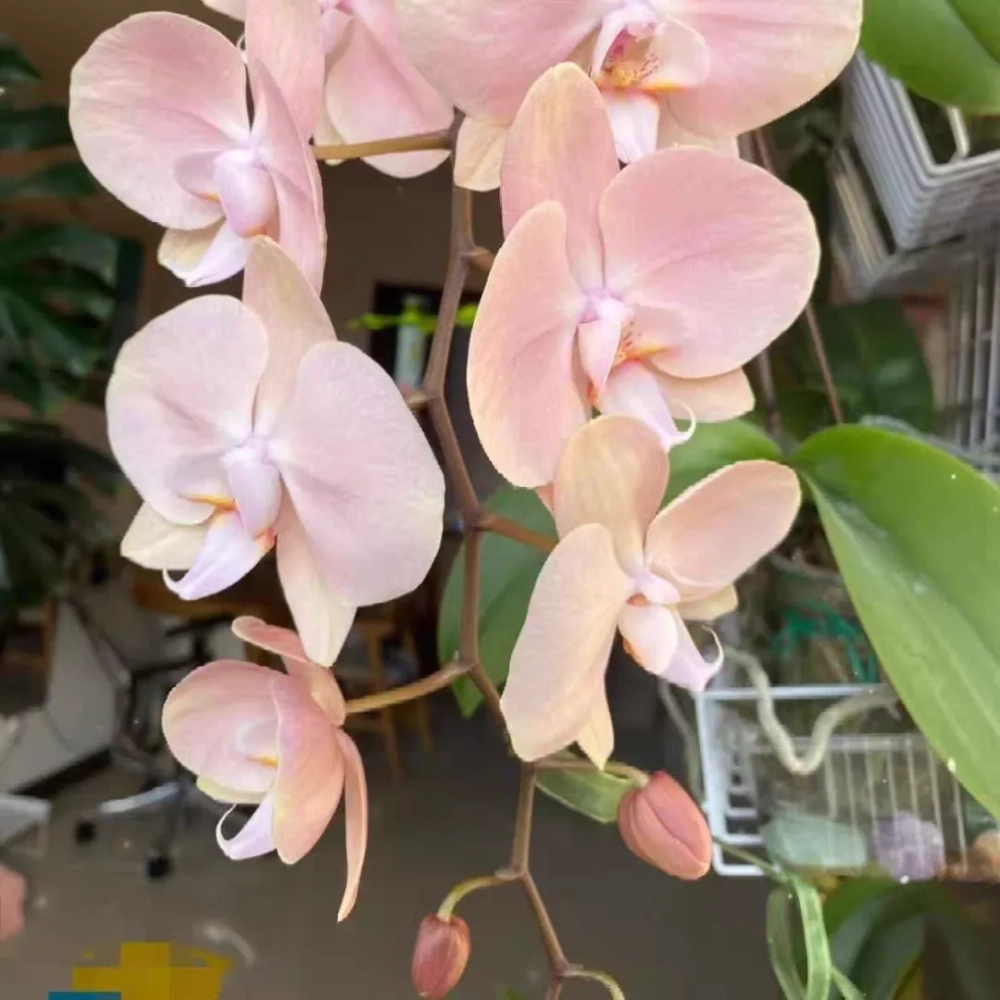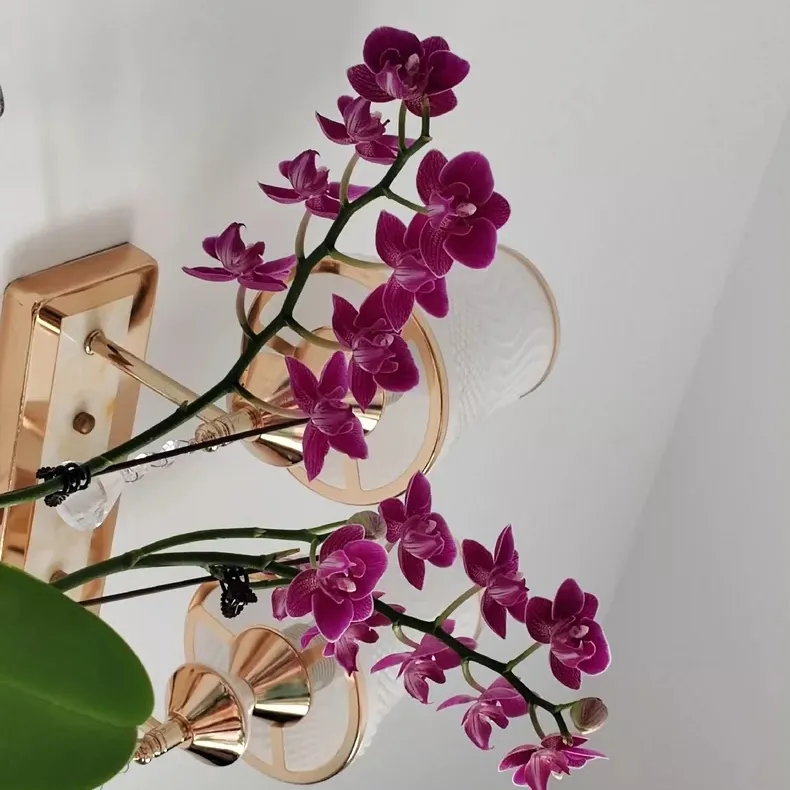Does the Phalaenopsis necessarily need sunlight for illumination?
When understanding the lighting requirements of Phalaenopsis, we often think of sunlight first. Indeed, as a plant that loves light, Phalaenopsis needs sufficient light sources to support its normal growth, development, and flowering process. So, is sunlight the only option to meet its lighting needs? When the temperature is low in winter, how should we provide suitable lighting for Phalaenopsis?
Phalaenopsis is a light-loving plant, but not all sunlight at different times and intensities is suitable for it. In its natural environment, Phalaenopsis is usually epiphytic in the shaded areas of trees and receives soft and scattered sunlight. Therefore, when cultivating Phalaenopsis at home, we need to simulate this natural lighting environment and avoid exposing it to strong sunlight for a long time. Otherwise, the leaves may be burned, turning white, withering, and deforming.
However, this doesn't mean that Phalaenopsis can only rely on sunlight. With the development of technology, artificial light sources can also provide good lighting conditions for Phalaenopsis. Common ones include fluorescent lamps, LED plant growth lights, etc. Fluorescent lamps are affordable and have soft light, which can meet the basic lighting needs of Phalaenopsis and are suitable for small-scale home cultivation. LED plant growth lights can precisely adjust the spectrum and light intensity according to the needs of Phalaenopsis at different growth stages. For example, during the vegetative growth stage, increasing the proportion of blue light helps with leaf growth and chlorophyll synthesis; during the reproductive growth stage, increasing the proportion of red light can promote flower bud differentiation and blooming. These artificial light sources are not limited by weather and time, providing more flexibility for the cultivation of Phalaenopsis.
When the temperature is low in winter, providing lighting for Phalaenopsis becomes particularly important. In winter, the sunshine duration is shortened, the intensity of sunlight weakens, and coupled with the inhibitory effect of low temperature on the growth of Phalaenopsis, if there is insufficient lighting, Phalaenopsis is likely to experience problems such as slow growth, yellowing leaves, and failure to bloom.
In winter, first of all, we should try to let Phalaenopsis receive as much natural light as possible. Place the Phalaenopsis on the south-facing windowsill or balcony indoors, which is the sunniest place in the house. On sunny days, let the Phalaenopsis bathe in the warm sunlight from morning to evening. But be careful that when the outdoor temperature is too low, don't let the Phalaenopsis directly touch the window glass to avoid cold damage. Because the glass will dissipate heat quickly, and the Phalaenopsis close to the glass may be damaged due to the sudden drop in temperature.
If the natural light cannot meet the lighting needs of Phalaenopsis, we need to use artificial light sources for supplementary lighting. An LED plant growth light can be installed about 30 - 50 centimeters above the Phalaenopsis, and the supplementary lighting should be provided for 8 - 12 hours a day. Adjust the supplementary lighting time and intensity according to the growth status of Phalaenopsis. For example, when the flowering period is approaching, appropriately increasing the supplementary lighting time can promote the development and blooming of flowers. When using artificial light sources, pay attention to observing the reaction of Phalaenopsis. If the leaves are burned or show abnormal growth, adjust the distance and intensity of the light source in a timely manner.
Precautions for lighting management:
Rotate the flower pot regularly: To ensure that the Phalaenopsis receives light evenly, we can gently rotate the flower pot every once in a while so that the leaves in all directions can be exposed to the light.
Keep the leaves clean: Regularly wipe the leaves of the Phalaenopsis gently with a soft wet cloth to keep them clean, which helps to improve the ornamental value and promote photosynthesis.
Avoid waterlogging: The roots of Phalaenopsis are afraid of waterlogging. It is recommended to use a special breathable flower pot and soil specially designed for Orchidaceae plants for cultivation to prevent root rot problems.
Although sunlight is crucial for the growth of Phalaenopsis, in specific situations (such as short sunshine duration and insufficient lighting in winter), we need to provide suitable lighting conditions for it by making use of natural light and auxiliary light sources. Only in this way can we ensure that Phalaenopsis can grow healthily and vigorously throughout the four seasons.
Does the Phalaenopsis necessarily need sunlight for illumination?

Share with
Tagged in :




Leave a Reply